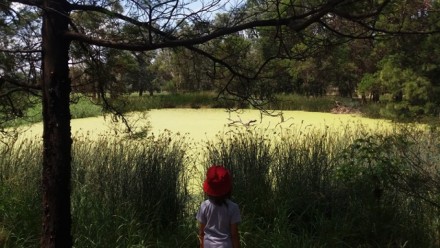Access and equity issues in primary health care services in rural and remote Australia
The research program of the CRERRPHC aimed to better understand key access and equity issues relating to the provision of appropriate, effective and high quality primary health care services in rural and remote communities of Australia. The integrated research program comprised three broad streams of research activity:
Stream 1: the geography of access
Arguably one of the most important aspects of equity and access to PHC services is the location and distance to these vital resources. Stream 1 research aimed first to assess differential access to PHC services and service utilisation on a national level, using sophisticated geo-spatial methodologies; and, secondly, to produce evidence and generate an improved measure of access to inform national PHC workforce planning and evaluation necessary to ensure citizens have an equal opportunity to be healthy.
Stream 2: the impact of rural and remote context on primary health care practice
Far from being provided ubiquitously, the availability of PHC in rural and remote areas relates very closely to the context in which services are provided and the nature of activity that PHC workers do. Different models of provision are required to take account of differences in population size and density, location, and needs. Unfortunately, a major gap limiting current health reform initiatives designed to increase equity of access to health care is lack of knowledge about what mix of PHC services communities of different sizes and locations require (and could reasonably expect) in order to maximise quality health outcomes. Ensuring equity of access requires a good understanding of the service requirements in terms of funding, infrastructure and human resources.
Stream 2 research aimed to collect primary data from high-performing PHC services operating in different rural and remote contexts to identify indicators and develop ‘benchmarks’ for key service requirements (such as workforce and funding) and service performance (for example, early intervention, treatment of acute and chronic disease) that can be used to quantify the volume and distribution of available care (that is ‘who gets how much of what services’).
Stream 3: evaluating sustainable PHC service models
Research has shown how a “one-coat-fits-all” model of health care fails many rural and remote Australians. The aim of Stream 3 research was to evaluate innovative PHC services which fill service gaps, better target health needs and promote workforce recruitment. This research aimed to highlight PHC models that minimise barriers (such as distance and affordability) and maximise access to optimal care in different contexts, particularly focusing on aged care, mental and Indigenous health. Building on previous research, the CRERRPHC sought to apply generic environmental enablers and essential service requirements to differing contexts in order to identify ‘what models work best where and why’.10-11
In short, the CRERRPHC research program sought to provide a national platform showing how improved access to appropriate PHC services for populations in locations with poorest access will increase equity in health care through improved health literacy, service utilisation and health outcomes.
Partnerships
- Department of Health (Grant Service Division; Primary and Mental Health Care Division; Mapping and Online Services, Workforce Distribution Branch; Rural and Regional Health Australia Division; Therapeutic Goods Administration)
- Health Consumers of Rural and Remote Australia Inc.
- NSW Rural Doctors Network
- CETI Rural Division
- Royal Flying Doctor Service
- Australian Primary Health Care Research Institute
- Aboriginal Medical Services Alliance Northern Territory
- National Rural Health Alliance Inc.
- External Reference Group developing Australia’s first National Primary Health Care Strategy
- Aboriginal Medical Services Alliance Northern Territory
- Australian Institute of Health and Welfare
- Rural and Regional Health Australia ,Department of Health
- Apunipima Cape York Health Council











